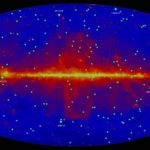A supermassive black hole shredded a star and was caught in the act0
- From Around the Web, Space
- October 16, 2019
Astronomers have gotten the earliest look yet at a tidal disruption event

Astronomers have gotten the earliest look yet at a tidal disruption event

But don’t worry, no laws of physics are being violated.

New observations show that 2I/Borisov looks like a comet, just what astronomers expected

Chilean officials are investigating a curious collection of burning objects that fell onto parts of the country last week.

“If they are here, I hope they’re nice,” Musk says.

Large galaxies like the Milky Way do not roam the cosmos alone. Instead, they are surrounded by many smaller companion galaxies. The largest satellite of the Milky Way is called the Large Magellanic Cloud (LMC), and it should be big enough to have its own satellites – but these satellites don’t seem to be there.

A lunar rover which will explore the moon on foot in 2021 was unveiled in London on Thursday.

Since sprites were discovered in the late 1980s, researchers have photographed thousands of the strange upward-reaching lightning bolts. Their oversized cousins, Gigantic Jets, are far more rare. Only dozens have been photographed. It is no wonder, then, that observers are still seeing new behaviors in this type of powerful “super sprite.” On Oct. 2nd, photographer Frankie Lucena may have recorded the first example of a “double Gigantic Jet.”

A decade after NASA sent a rocket crashing into the moon’s south pole, spewing a plume of debris that revealed vast reserves of ice beneath the barren lunar surface, the space agency is racing to pick up where its little-remembered project left off.

The gas giant has 82 moons, surpassing the 79 known to orbit its larger neighbour



